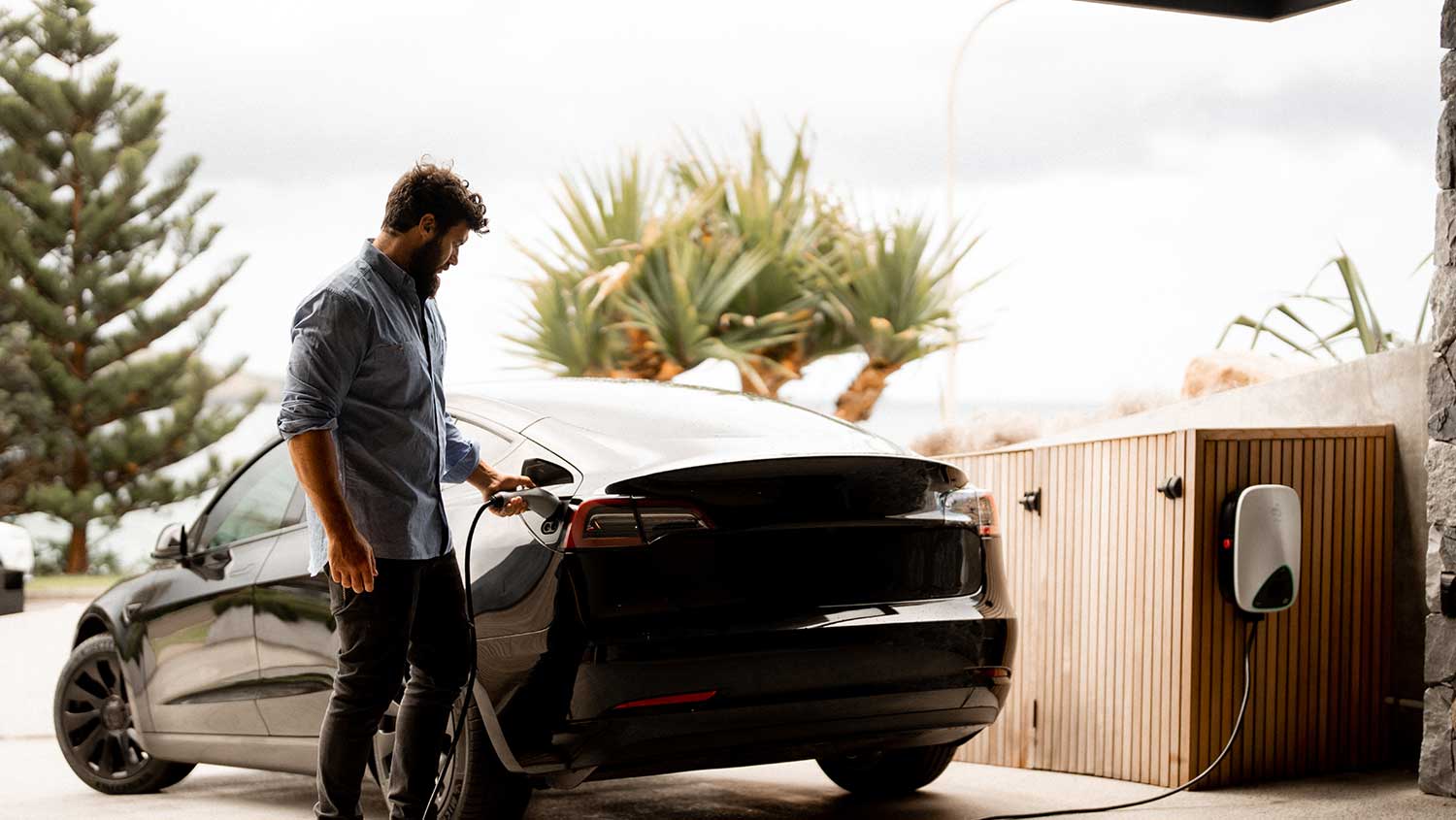With Electric Vehicle prices dropping, more range, fuel costs on the rise, the uptake of Electric Vehicles have been steadily rising in Australia.
So, what does this mean for electricians and their businesses in Australia? For those working across commercial and residential, there will likely be more customers who own or drive an electric vehicle, and who might be looking for a way to charge their car. It also presents a business opportunity to add value to customers – being able to offer a safer, faster and more efficient way of charging their electric vehicle, than a standard 3-pin plug.
Due to this rise in demand, Schneider Electric have released a new EVlink Home charger, specifically designed for residential use.
Here are the top 5 things you should know about the new EVlink Home EV charger.

1. It comes with an in-built RDC-DD
Which can save space in the switchboard and also help keep the costs down, by accompanying it with a Clipsal MAX9 Type A RCBO rather than the larger Type B RCD option and additional 2P MCB.
2. It comes in two different kW options
The more commonly used single phase 7.4kW option and a three phase; 11kW option if needed. Just remember to not fall into the common trap of thinking the 11kW option will charge the car the fastest, as many current models of EVs can only take 7.4kW of charge anyway not to mention the majority of AU homes don’t have a 3 phase supply. We also have options with and without EV charging cables, depending on the customer’s needs – especially if they have yet to purchase an EV.
3. It has an optional peak controller
Which you can add to the installation if you wish. This anti-tripping module limits the maximum power draw of the EVlink Home charging station to ensure the continuity of the electrical distribution. It can also sense the total current drawn by the local installation and, depending on the maximum current threshold set by the user, reduces the current drawn by the EVlink Home charging station.
4. It is simple and easy to install
I know – every manufacturer says that about their products, so it is probably easier to show you this installation video so you can see for yourself. One handy tip to note when installing this solution is to think about adding a 56 series isolator, allows removal or upgrade of the charger in future. Also makes transition to the circular TPS entry hole in the charger much easier.

5. This EVlink Home is not a smart charger
So be careful if you have a customer who is looking for more bells and whistles and wants app control. If they need a simple, reliable charger that is easy to use, easy to install, with local set and forget energy management at an accessible price then this is a great option. It’s as simple as ‘plug & charge’.
So, is it worth recommending a home charger to your customers?
Many EV owners commonly charged their vehicles at home. Using a standard 3-pin power outlet for this is slow and can have major drawbacks when it comes to convenience for the user and readiness of the car, not to mention safety. Installing a dedicated fast charger like EVlink Home ensures the car is available and ready to go (with enough charge) much faster.
